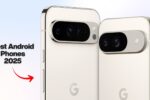The rivalry between Apple and Samsung in the United States has reached a new level. What used to be a battle over camera quality or battery life is now about identity, lifestyle, and loyalty. Choosing a phone has become more personal, with users strongly committed to their favorite brand. This growing divide reflects shifting consumer behavior, marketing strategies, and technology trends.
Different Identities, Different Experiences
Apple and Samsung don’t just sell smartphones; they offer two completely different experiences.
Apple represents a clean, minimal, and exclusive ecosystem, while Samsung attracts those who value customization and advanced technology.
Some key differences include:
- Apple users often prefer simplicity and elegance
- Samsung users enjoy flexibility and innovative features
- Apple focuses on a uniform design experience
- Samsung provides more control over customization
These differences shape how users see themselves and their devices, creating strong brand identities.
The Power of Ecosystems
One of the strongest reasons people stick to a brand is its ecosystem. Both companies have built strong systems around their phones.
| Feature | Apple Ecosystem | Samsung Ecosystem |
|---|---|---|
| Device Integration | iPhone, MacBook, iPad, Apple Watch | Galaxy phones, tablets, watches, SmartThings |
| Messaging | iMessage, FaceTime | Google Messages, Samsung Messages |
| File Sharing | AirDrop | Quick Share |
| Operating System | iOS | Android (One UI) |
| Compatibility with Other Devices | Limited outside Apple products | Compatible with multiple brands |
Apple creates a closed system where everything works smoothly but mostly with other Apple products. Samsung, meanwhile, builds a flexible system that allows users to connect with a wider range of devices.
Emotional Connection and Brand Loyalty
Phones are more than tools; they’re emotional companions. Many Apple users feel a sense of pride and community when using an iPhone. Features like iMessage bubbles have even turned into social symbols.
For Samsung users, the loyalty often comes from:
- Advanced features and innovation
- Control over settings and layout
- Compatibility with different devices
- A sense of being ahead of the curve technologically
This emotional connection means people are less likely to switch brands, even when a competitor releases something new.
Marketing Strategies Fuel the Competition
Apple and Samsung invest heavily in marketing to maintain their loyal user base. Their strategies highlight their unique strengths.
- Apple focuses on lifestyle, elegance, and seamless integration.
- Samsung highlights innovation, power, and freedom of choice.
- Apple campaigns are clean, minimal, and emotional.
- Samsung often takes a more playful and bold approach.
Their marketing not only sells products but also shapes how users perceive themselves when holding those products.
Innovation Versus Consistency
The two companies also have different approaches to product development.
Samsung’s approach:
- Introduces new technologies quickly
- Experiments with foldable screens and AI-powered features
- Appeals to users who want the latest tools
Apple’s approach:
- Focuses on gradual, polished improvements
- Prioritizes stability and reliability
- Appeals to users who value trust and simplicity
This difference creates two separate types of loyal consumers. One group chases innovation, while the other values consistency.
The Social Influence Factor
Peer pressure plays a surprisingly large role in the smartphone divide. In the U.S., iMessage has become a major reason why many younger users prefer Apple. The blue bubble is seen as a sign of being “in the group,” while green bubbles (from Android users) sometimes lead to social pressure.
Samsung’s strength lies in communities built around tech enthusiasts, gamers, and professionals. These users often encourage others to switch because of better specs, flexibility, or pricing options.
Why Switching Is So Hard
Even when users are curious about the other brand, switching can feel like a big step. Some common barriers include:
- Fear of losing data and apps
- Learning a new interface
- Rebuying compatible accessories
- Leaving behind familiar features like iMessage or S Pen
These practical challenges add to the emotional loyalty, making it even harder for users to change sides.
A Divide That May Keep Growing
Apple and Samsung are both expanding their product lines and improving their ecosystems. With every new feature, the gap between their users becomes wider.
- Apple is doubling down on services like iCloud, Apple Pay, and Apple TV+.
- Samsung continues to lead in display technology, foldables, and device compatibility.
- Each company builds stronger communities around their products.
This means the competition is no longer about which phone is “better.” It’s about which lifestyle fits the user more closely.
The Bigger Picture
The growing divide between Apple and Samsung users in the U.S. is a reflection of culture, identity, and trust as much as technology.
Apple stands for:
- Simplicity
- Consistency
- Community
Samsung stands for:
- Innovation
- Flexibility
- Personal control
As both brands continue to expand their ecosystems and strengthen their identities, this divide is likely to grow. Consumers are no longer just buying a phone; they’re choosing a side.



